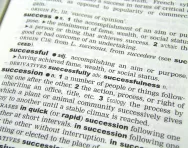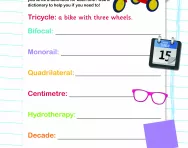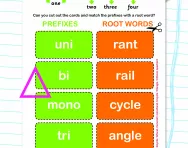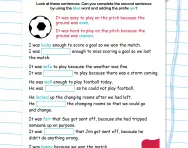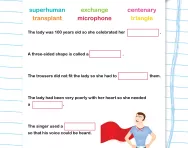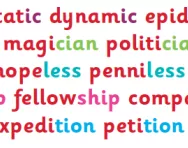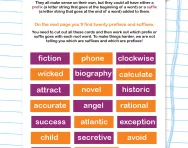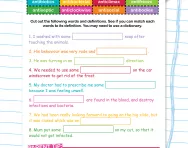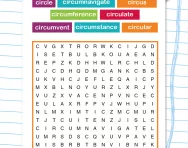Important update from TheSchoolRun
For the past 13 years, TheSchoolRun has been run by a small team of mums working from home, dedicated to providing quality educational resources to primary school parents. Unfortunately, rising supplier costs and falling revenue have made it impossible for us to continue operating, and we’ve had to make the difficult decision to close. The good news: We’ve arranged for another educational provider to take over many of our resources. These will be hosted on a new portal, where the content will be updated and expanded to support your child’s learning.
What this means for subscribers:
- Your subscription is still active, and for now, you can keep using the website as normal — just log in with your usual details to access all our articles and resources*.
- In a few months, all resources will move to the new portal. You’ll continue to have access there until your subscription ends. We’ll send you full details nearer the time.
- As a thank you for your support, we’ll also be sending you 16 primary school eBooks (worth £108.84) to download and keep.
A few changes to be aware of:
- The Learning Journey weekly email has ended, but your child’s plan will still be updated on your dashboard each Monday. Just log in to see the recommended worksheets.
- The 11+ weekly emails have now ended. We sent you all the remaining emails in the series at the end of March — please check your inbox (and spam folder) if you haven’t seen them. You can also follow the full programme here: 11+ Learning Journey.
If you have any questions, please contact us at [email protected]. Thank you for being part of our journey it’s been a privilege to support your family’s learning.
*If you need to reset your password, it will still work as usual. Please check your spam folder if the reset email doesn’t appear in your inbox.
What is a prefix?
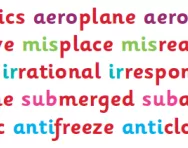
What is a prefix?
Prefixes taught in Key Stages 1 and 2
Children start to learn about words with prefixes in Year 1, although most of them are not taught until Key Stage 2.
They are expected to learn prefixes in the following order. Children will learn what each prefix means, and will look for other words with the same prefixes.:
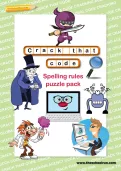
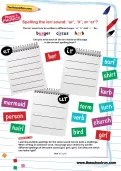
Claim FREE Spelling Resources Today
- Spelling workbooks
- Step-by-step programme
- Spelling test packs
- 100s of worksheets & games
Year 1
Prefixes: un-
Example words: unhappy
Years 3 and 4
Prefixes: dis-, mis-, in-, il-, im-, irr-, re-, sub-, inter-, super-, anti-, auto-
Example words: disappoint, misbehave, inactive, illegal, immature, irregular, reappear, subheading, international, supermarket, anti-clockwise, autobiography
Year 6
Prefixes: bi-, aqua-, aero-, super-, micro-, audi-, trans-, prim-, auto-, tele-, re-, pre-
Example words: bicycle, aquarium, aeroplane, supernatural, microscope, audible, transport, primary, automatic, telephone, replay, prehistoric
Children are taught the meanings of different prefixes (for example: 'bi' means 'two'). Then they will look at words with these prefixes and how that meaning is incorporated into the word, for example: a bicycle has two wheels and a bilingual person is fluent in two languages. This 'breaking down' of words helps children to understand the meaning of other words and to think carefully about how these words are spelt.
Why are children taught prefixes?
Teaching children words with prefixes means that they are broadening their vocabulary by learning new words and their meanings, which they can then incorporate into their writing. It also means that they are learning the spellings of new words.
It is quite common for a teacher to choose one particular prefix and then give a list of spellings with that prefix for the children to learn.
Ways in which teachers help children to learn words with prefixes may include the following:
- The process of Look, Cover, Write, Check, where a child looks at a word, covers it over, writes it from memory and then looks back at the original word to check they have got it right.
- Worksheets where words needs to be matched with a definition.
- 'Fill the gap' worksheets, where a few sentences are given, each missing a certain word with a prefix. A list of these words with prefixes is given in a box on the sheet, and children need to decide which word goes where.
- Asking children to find words with a certain prefix and find out their meanings (using a dictionary).
To find worksheets and activities to help your child practise prefixes look through the selection of spelling worksheets on the site.

